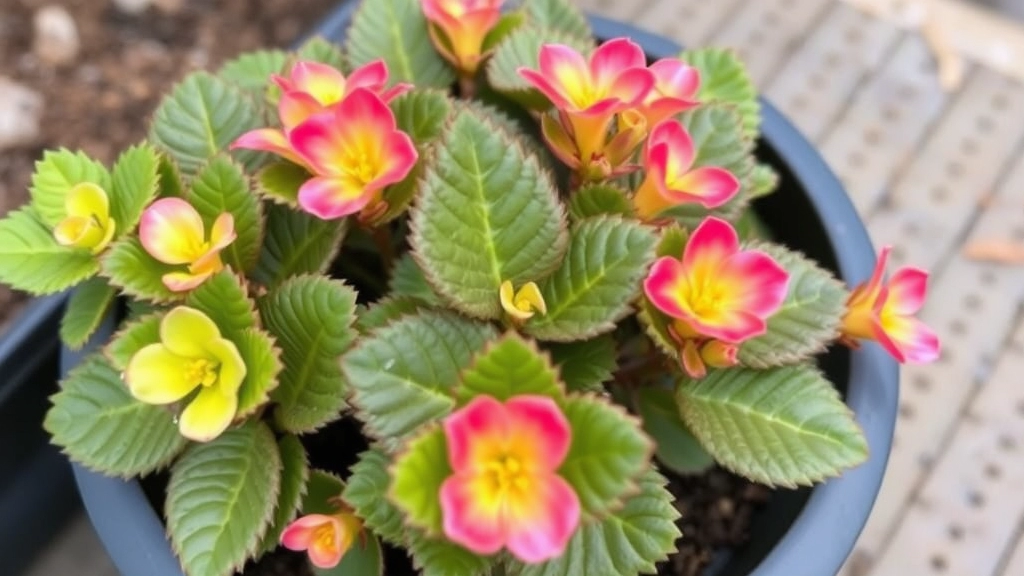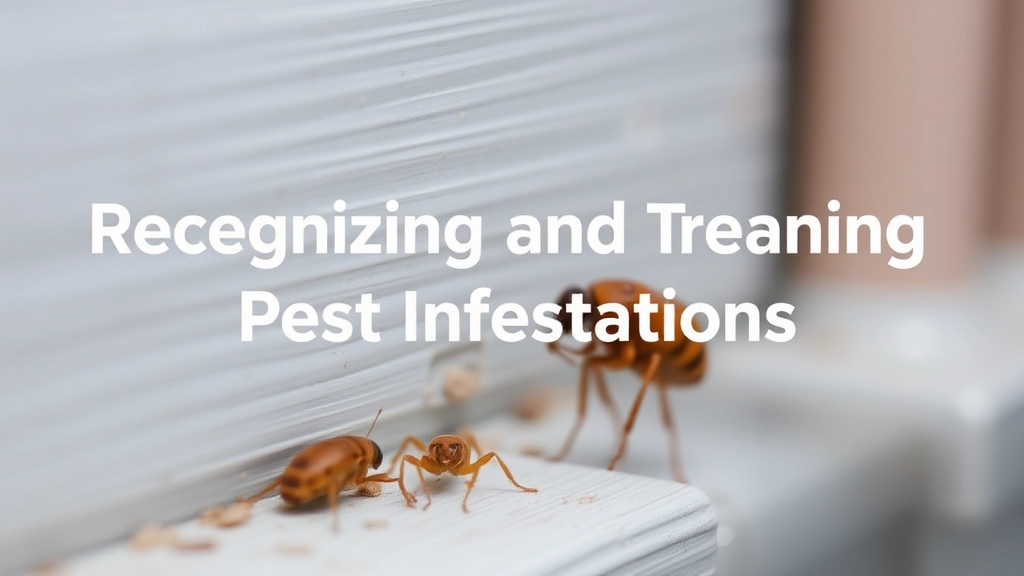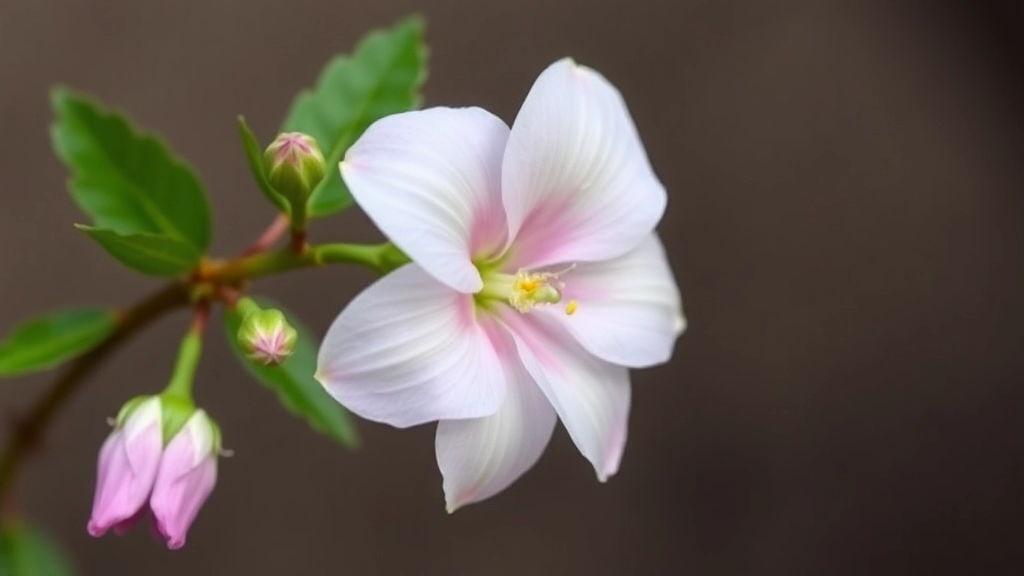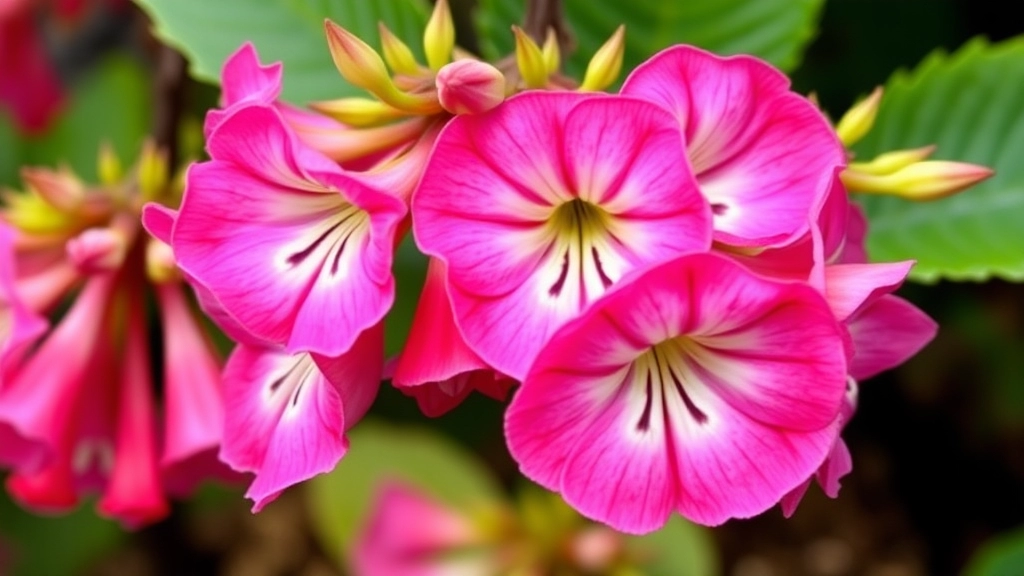Kalanchoe Flowers Drooping: Common Causes and Solutions
Ever noticed your Kalanchoe flowers drooping and wondered why? You’re not alone. Drooping blooms can be a sign of various issues, from improper watering to environmental stress. Let’s dive into some common causes and how you can revive your Kalanchoe plants.
Watering Habits
First, consider your watering habits. Overwatering or underwatering can lead to drooping flowers. Ensure the soil is well-draining and water only when the top layer feels dry.
Light and Temperature Conditions
Next, check the light and temperature conditions. Kalanchoes thrive in bright, indirect light and moderate temperatures. Too much direct sunlight or extreme temperatures can stress the plant, causing the flowers to droop.
Have you ever noticed your Kalanchoe flowers drooping and wondered what could be wrong? This beautiful succulent can sometimes show signs of distress, and understanding the common causes of drooping is essential for maintaining its health.
One of the most frequent culprits behind drooping flowers is overwatering. Kalanchoes prefer well-drained soil and can suffer if their roots sit in water. Signs of overwatering include yellowing leaves and a mushy stem. For more detailed care instructions, you can refer to this [complete guide to Kalanchoe plant care](https://planthq.org/complete-guide-to-kalanchoe-plant-care/).
On the flip side, underwatering can also lead to drooping. If the soil is too dry, the plant may not have enough moisture to support its blooms. Check the soil regularly; if it feels dry several inches down, it’s time to water.
Kalanchoes thrive in bright, indirect sunlight. If your plant isn’t getting enough light, it may droop as it stretches towards the light source. Ensure your Kalanchoe is in a well-lit area, but avoid harsh direct sunlight that can scorch its leaves. For more tips on keeping your Kalanchoe healthy, check out this [expert guide on how to care for a Kalanchoe succulent](https://planthq.org/how-to-care-for-a-kalanchoe-succulent-expert-tips/).
Extreme temperatures can stress your Kalanchoe. Ideally, it should be kept in a stable environment between 15°C to 25°C. Sudden drafts or heat sources can cause the flowers to droop.
A lack of essential nutrients can lead to weak stems and drooping flowers. Consider using a balanced fertiliser during the growing season to provide your Kalanchoe with the nutrients it needs.
How Watering Affects Kalanchoe Health

Have you ever wondered why your Kalanchoe might be drooping? Well, watering is a big deal when it comes to keeping these beauties healthy.
Too much or too little water can lead to all sorts of problems.
Signs of Overwatering:
- Yellowing Leaves: If the leaves start turning yellow, it could be a sign you’re drowning your plant.
- Mushy Stems: A squishy stem? That’s a red flag!
- Root Rot: Too much water can lead to root rot, a nasty issue that’s hard to fix.
Signs of Underwatering:
- Wrinkled Leaves: If the leaves look shrivelled, it’s time to give them a drink.
- Drooping Flowers: Flowers that start to droop? They’re thirsty!
Tips for Proper Watering:
- Check the Soil: Stick your finger in the soil. If it’s dry an inch down, it’s time to water.
- Water Deeply: When you do water, give them a good soak. Let the water drain out of the bottom to ensure the roots get what they need.
- Frequency: Generally, watering every 1-2 weeks works, but it depends on your climate and the potting mix.
Finding that sweet spot in watering can make all the difference for your Kalanchoe.
Managing Light and Temperature for Optimal Growth
Have you ever noticed your Kalanchoe flowers drooping despite your best care efforts? One often overlooked factor is the environment, particularly light and temperature.
The Importance of Light
Kalanchoe plants thrive in bright, indirect sunlight. Here’s how to ensure they get the right amount:
- Location: Place your Kalanchoe near a window where it can receive ample light without being scorched by direct rays.
- Duration: Aim for 6 hours of light daily. Too little light can lead to leggy growth and drooping flowers.
- Seasonal Adjustments: In winter, you may need to rotate your plant to ensure all sides receive equal light exposure.
Temperature Considerations
Temperature plays a crucial role in Kalanchoe health. Here are some key points to remember:
- Ideal Range: Kalanchoe prefers temperatures between 18°C to 24°C (65°F to 75°F).
- Avoid Extremes: Keep your plant away from cold drafts and heating vents. Sudden temperature fluctuations can stress the plant, leading to drooping.
- Humidity Levels: Kalanchoe can tolerate low humidity, but excessively dry air can cause wilting. A little humidity can go a long way.
By managing light and temperature effectively, you can create an environment where your Kalanchoe flourishes. For more detailed care tips, check out our guide on flowering Kalanchoe succulent care and learn about the causes and solutions for non-flowering Kalanchoes.
Recognizing and Treating Pest Infestations

Have you noticed your Kalanchoe flowers drooping despite proper care? Pest infestations could be the hidden culprit.
Common Pests Affecting Kalanchoe
Understanding which pests target Kalanchoe is crucial for effective treatment. Here are the most common offenders:
- Aphids: Tiny, green insects that suck the sap from leaves, leading to wilting and drooping.
- Mealybugs: White, cottony pests that can cause yellowing leaves and stunted growth.
- Spider Mites: Tiny red or brown dots that create webbing, resulting in leaf damage.
- Scale Insects: Hard, shell-like pests that adhere to stems and leaves, draining nutrients.
Signs of Infestation
Recognising the signs early can save your Kalanchoe from severe damage. Look for:
- Sticky residue: A sign of aphids or mealybugs.
- Discoloured leaves: Often indicates a pest problem.
- Webbing: A telltale sign of spider mites.
- Visible pests: Check the undersides of leaves and along stems.
Treatment Options
Once you identify the pest, it’s time to act. Here are some effective treatment methods:
- Insecticidal soap: Spray directly on pests for immediate effect.
- Neem oil: A natural pesticide that disrupts the life cycle of pests.
- Manual removal: For small infestations, wipe the pests away with a damp cloth.
- Diatomaceous earth: Sprinkle around the plant to deter crawling insects.
Prevention Tips
To keep your Kalanchoe healthy and pest-free, consider these preventative measures:
- Regular inspections: Check your plants weekly for any signs of pests.
- Proper spacing: Ensure good air circulation around your plants to deter pests.
- Healthy soil: Use nutrient-rich soil to keep your Kalanchoe robust and resilient.
Addressing Root Rot and Fungal Diseases
Have you noticed your Kalanchoe wilting despite adequate care? Root rot and fungal diseases could be the culprits behind this distressing issue.
Understanding Root Rot
Root rot is a common problem for Kalanchoe plants, typically caused by overwatering or poorly draining soil. When roots sit in waterlogged conditions, they become deprived of oxygen, leading to decay. Signs of root rot include:
- Yellowing leaves
- A mushy texture in the stems
- A foul smell from the soil
To combat root rot, take immediate action:
- Inspect the Roots: Gently remove the plant from its pot and examine the roots. Healthy roots should be firm and white. If you find brown, mushy roots, it’s time for a trim.
- Trim Affected Roots: Use clean, sharp scissors to remove the rotting sections. This helps prevent the spread of decay.
- Repot with Fresh Soil: Choose a well-draining potting mix, ideally one designed for succulents. This will help maintain the right moisture balance.
- Adjust Watering Habits: Allow the top inch of soil to dry out before watering again. This simple change can make a world of difference.
Fungal Diseases
Fungal infections can also plague Kalanchoe, often appearing as spots or mold on the leaves. Common fungal diseases include powdery mildew and leaf spot. Here’s how to identify and treat them:
- Powdery Mildew: A white, powdery substance on leaves.
- Treatment: Increase air circulation around the plant and apply a fungicide if necessary.
- Leaf Spot: Dark, water-soaked spots that can spread quickly.
- Treatment: Remove affected leaves and avoid overhead watering to reduce moisture on the foliage.
Prevention is Key
To keep your Kalanchoe healthy and thriving, consider these preventative measures:
- Use pots with drainage holes.
- Water less frequently during cooler months.
- Ensure good air circulation around the plant.
For more detailed tips on keeping your plant healthy, check out our Kalanchoe care tips for thriving in Texas climate and our ultimate guide to growing and caring for succulent plant Kalanchoe.
Flower Weight and Stems: Physical Causes of Drooping

Ever looked at your Kalanchoe and thought, “Why are those beautiful flowers drooping?”
Sometimes, it’s not just about water or pests. The physical weight of the flowers and the strength of the stems can play a significant role in how upright your plant stands.
Understanding Flower Weight
Kalanchoes are known for their stunning, heavy blooms. While they’re a sight to behold, all that weight can lead to drooping if the stems aren’t strong enough to support them.
- Heavy Blooms: If your flowers are particularly large or numerous, they might be pulling the stems down.
- Stem Weakness: Stems can weaken due to improper care, like not enough light or nutrients.
Signs of Physical Drooping
Keep an eye out for these signs:
- Bending Stems: If the stems are bending significantly, it’s a clear sign they’re struggling.
- Flower Orientation: Flowers that are facing downwards instead of outward can indicate the stems can’t support them.
What You Can Do
Here are some quick tips to help your Kalanchoe stand tall:
- Support the Stems: Use stakes or small supports to prop up heavy flowers.
- Prune Wisely: Trim off any dead or overly heavy flowers to lighten the load.
- Repot if Needed: If your plant has outgrown its pot, consider repotting it to give the roots more space and stability.
Preventative Care Tips for Healthy Kalanchoe Blooms
Are you worried about your Kalanchoe’s health and the possibility of drooping flowers?
Preventative care is essential to ensure your Kalanchoe thrives and blooms beautifully. Here are some straightforward tips to keep your plant in top shape:
- Water Wisely:
- Allow the soil to dry out between waterings.
- Use well-draining soil to prevent excess moisture.
- Optimal Light Exposure:
- Place your Kalanchoe in bright, indirect sunlight.
- Rotate the plant occasionally to ensure even light distribution.
- Maintain Ideal Temperature:
- Keep your Kalanchoe in temperatures between 15°C to 25°C.
- Avoid cold drafts and sudden temperature changes.
- Fertilise Regularly:
- Use a balanced fertiliser every few months during the growing season.
- Dilute the fertiliser to half-strength to avoid overfeeding.
- Inspect for Pests:
- Regularly check the undersides of leaves for pests like aphids or mealybugs.
- Use insecticidal soap if you notice any infestations.
- Prune When Necessary:
- Remove dead or yellowing leaves to promote new growth. For more detailed guidance, check out our pruning tips and techniques.
- Trim back leggy stems to encourage bushier growth. Learn more about thriving Kalanchoe care.
FAQs About Kalanchoe Flowers Drooping
Why are my Kalanchoe flowers drooping?
Drooping flowers can be caused by several factors including improper watering, pest infestations, and the physical weight of the blooms. Ensuring proper care can help prevent drooping.
How does watering affect the health of my Kalanchoe?
Watering plays a crucial role in Kalanchoe health. Both overwatering and underwatering can lead to problems such as yellowing leaves, mushy stems, root rot, wrinkled leaves, and drooping flowers.
What are the signs of overwatering my Kalanchoe?
Signs of overwatering include yellowing leaves, mushy stems, and root rot. It’s important to allow the soil to dry out between waterings.
What are the signs of underwatering my Kalanchoe?
Underwatering can cause wrinkled leaves and drooping flowers. Ensure you water the plant when the soil is dry about an inch down.
What pests commonly affect Kalanchoe plants?
Common pests include aphids, mealybugs, spider mites, and scale insects. These pests can cause various issues like wilting, yellowing leaves, and webbing.
How can I identify a pest infestation on my Kalanchoe?
Look for sticky residue, discoloured leaves, webbing, and visible pests on the undersides of leaves and along stems. Regular inspections can help catch infestations early.
What are some effective treatments for pest infestations?
Treatment options include insecticidal soap, neem oil, manual removal, and diatomaceous earth. These methods can help control and eliminate pests.
How can I prevent pest infestations on my Kalanchoe?
Preventative measures include regular inspections, proper spacing for air circulation, and using nutrient-rich soil to keep your plant healthy and resilient.
Can the physical weight of the flowers cause drooping?
Yes, Kalanchoe flowers can droop due to their weight, especially if the stems are not strong enough to support them. This can be exacerbated by improper care, such as insufficient light or nutrients.
What are the signs of physical drooping due to flower weight?
Signs include bending stems and flowers that face downwards instead of outward. These indicate that the stems are struggling to support the weight of the blooms.
What can I do to support my Kalanchoe flowers?
You can support the stems with stakes, prune heavy or dead flowers, and consider repotting if the plant has outgrown its current pot. These steps can help your Kalanchoe stand tall and healthy.
References
-
Understanding Why Your Kalanchoe Plant is Wilting
-
Kalanchoe Pests and Diseases
-
Kalanchoe Plant Care Guide
